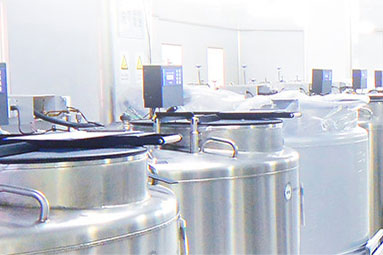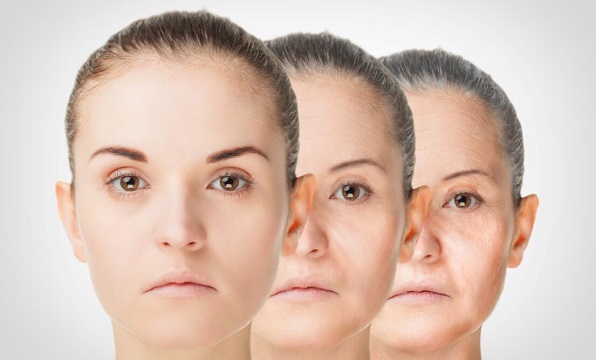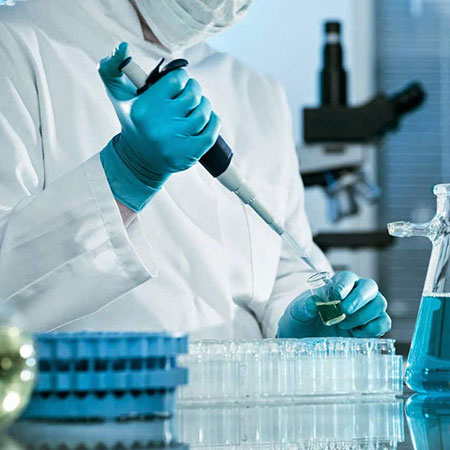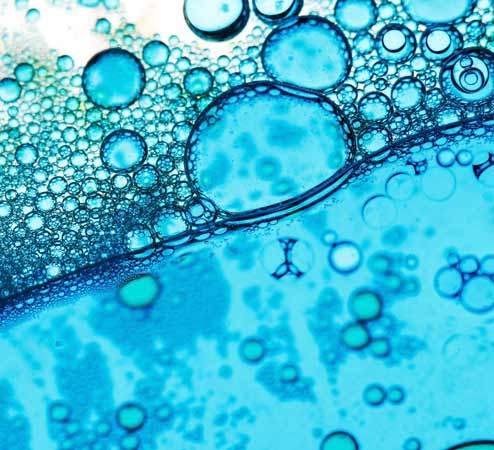- Email:[email protected]
- Tel: (852)51044851
-
Regeneration is ‘next generation’ of treatment
Regenerative medicine will become the “next generation” of medical treatment, with researchers already working on regrowing bones and even nerves on artificial scaffolding, said Dr. Anthony Windebank, associate director for discovery in the Mayo Center for Regenerative Medicine. Instead of transplanting an organ from a donor, Mayo providers will use the body’s own resources to help re-grow organs. “This is using entirely new results from research coming from many directions,” Windebank said. It’s one of the most exciting and active areas of research at the moment, he said. Mayo plans to use its own research discoveries and discoveries made around the world. That knowledge, Windebank said, “we will then be bringing, as quickly as we can to our patients.” About 20 lead researchers, each with a large laboratory and clinical staff, are focused on regenerative-medicine discovery efforts, Windebank said. Peripheral nerve injuries, ALS, severe blood vessel disease compromising blood flow to the limbs, kidney disease, heart disease, eye disease and diabetes are all understood. “Probably one of the most-important and the broadest is diabetes,” Windebank said. The major advance in the past five years “has been the ability to acquire cells from people … and to take these cells out of the body, to grow them up in very large numbers in a way that is both acceptable and safe, to then use them in tissue replacement in patients.” Instead of using embryonic stem cells, Mayo uses tissue taken from the patient’s body and coaxes them to become stem cells. Embryonic stem cell treatment currently requires use of immunosuppressive drugs. With adult stem cells from the patient, the need for those drugs is eliminated because the body is less likely to reject the cells. “Tissue engineering” can make “scaffolds” — a structure to support the cells. Windebank says tissue engineering involves the field of “biodegradable polymer chemistry” using tissue engineering to create a scaffold for bone healing. Put the scaffold in, seed it with the patient’s stem cells and the goal is to get the cells to re-grow the bone. For example, if you had to remove bone during cancer treatment or after a trauma, “you use a scaffold that kind of mimics the architecture of the bone, but to make it living, you have to add cells to the scaffold.” “You put that in and that sort of forms the area where the body itself will then use that…
[Read More] -
Fountain of youth? Scientists use stem cells to stall aging in mice
(CBS) Have scientists finally discovered the fountain of youth? Results from a new study suggest a way to stop aging might not be too far-fetched after all. Researchers at the University of Pittsburgh have developed a stem cell treatment that significantly stalls aging and increases life span – if you’re a mouse. But the study, which shows how stem cells influence aging, may provide new clues on aging that will one day help humans. For the study, published in the Jan 3. issue of Nature Communications – researchers injected a combination of stem cells and a similar type of cells – called progenitor cells – into mice that were bred with the disease progeria. Progeria is a rare genetic disease that causes advanced aging in children. PICTURES: Progeria: First black child with rare aging disease The cells came from the muscle tissue of young healthy mice. Mice with advanced progeria usually live for only days, but when the researchers injected the mice with a single dose of stem cells when they were 17 days old, the mice’s life spans shot up, with some living up to 66 days. What’s more impressive, according to study co-author Dr. Laura Niedernhofer, associate professor in the department of microbiology and molecular genetics at the University of Pittsburgh, was when the researchers injected the stem cell mix into mice with a milder form of the aging disease. Those mice typically would show signs of aging like weak leg muscles, walking hunched over, and trembling. Following two injections of stem cells spaced several weeks apart, the mice saw relief in 75 percent of their symptoms. That suggests the stem cells delayed the effects of aging. “That to me is exciting,” Niedernhofer told CBS News. “It’s really keeping the mice as healthy as possible in terms of aging.” Niedernhofer says their study suggests that stem cell dysfunction may be the cause behind some of the changes we see with aging. Does that mean a stem cell therapy would reverse aging in humans? It’s too soon to sell. But Niedernhofer said the study suggests that the healthy stem cells from young mice somehow rejuvenated the aging mice’s cells, as opposed to replacing them. This effect was seen when the mice’s brains became healthier, despite only being injected with stem cells through the stomach. Niedernhofer says if scientists discover the mechanism that “flips the switch” to rejuvenate older stem…
[Read More] -
Stem cells repair damaged heart muscle in preliminary study
Stem cells can effectively repair damaged heart muscle in patients with chronic heart failure, reducing scar tissue and improving their quality of life, according to a preliminary study by researchers at Johns Hopkins and the University of Miami. In a study of 31 patients, results indicated that stem cell treatment was safe and beneficial, regardless of whether the cells came from the patient’s own bone marrow or from a healthy volunteer An article describing the study was published online by the Journal of the American Medical Association on Nov. 6. Results were presented that same day at the American Heart Association Scientific Sessions in Los Angeles. According to the researchers, from the Johns Hopkins University School of Medicine and the University of Miami Miller School of Medicine, this is the first study to compare autologous stem cells, which are derived from the patients’ own bone marrow, to allogeneic stem cells, taken from the marrow of healthy volunteers, in patients with heart disease. The advantage of using allogeneic cells is the potential for developing an off-the-shelf therapy that could be delivered in a more timely manner, rather than requiring a bone marrow biopsy from heart failure patients and waiting for the cells to be processed. Also, stem cells from the patients themselves may not be as robust. All of the study patients had chronic heart failure caused by a prior heart attack that blocked blood flow to the heart and damaged heart muscle. The condition affects about 70 percent of the six million people in the United States who suffer from heart failure. “The primary focus of our study was to determine the safety of the therapy, specifically within 30 days of the treatment,” said Gary Gerstenblith, professor of medicine at the Johns Hopkins University School of Medicine and co-author of the study. “We found that the treatment was safe and also that many of the patients experienced significant improvement, whether they had received the allogeneic or the autologous stem cells.” Patients in the study were randomly selected to have either their own stem cells or donated cells injected directly into their heart muscle. They were monitored for treatment-associated complications, including death, heart attack, stroke, hospitalization for worsening heart failure, and dangerous heart arrhythmias. All of the patients were still alive 12 months after the treatment. The researchers were especially interested in learning whether the patient’s immune system would recognize the…
[Read More] -
Type 1 Diabetes Stem Cell Breakthrough Moves Toward Cure
In a breakthrough that signifies a move toward a cure for type 1 diabetes, researchers in Australia have identified stem cells in the pancreas that can be turned into insulin-producing cells. The finding promises to bring closer the day when people with type 1 diabetes will be able to produce their own insulin in their own regenerated insulin-producing pancreatic cells. The discovery is the work of scientists at the Walter and Eliza Hall Institute of Medical Research, Parkville, Victoria. They write about their findings in a paper published online in PLoS ONE on 9 November. Type 1 Diabetes Type 1 diabetes is a disease where the body’s immune system attacks and destroys the cells in the pancreas that produce insulin. Without insulin the body cannot control blood sugar or glucose, which results in serious damage to organs and potentially fatal levels of blood glucose. Patients with type 1 diabetes have to have several injections of insulin a day, or use an insulin infusion pump, to control their blood glucose. But these methods are not perfect and patients remain at risk of serious long-term health problems. Pinpointed Cell of Origin In their paper, Dr Ilia Banakh and Professor Len Harrison from the Walter and Eliza Hall Institute’s division of Molecular Medicine, and colleagues, describe how they identified and isolated stem cells from the adult pancreas, and then developed a way to coax them into insulin-producing cells that can secrete insulin in response to glucose. This discovery could lead to new treatments that mean daily insulin injections become a thing of the past. Harrison explains in a separate statement how there have been previous successes at generating insulin-producing cells in the adult pancreas from cells with “stem-like” features, but what excites him about this find is that Banakh has pinpointed “the cell of origin of the insulin-producing cells and shown that the number of these cells and their ability to turn into insulin-producing cells increases in response to pancreas injury”. The researchers worked first with cells in the “test tube”, and then tested the method in mice: “Insulin expression was maintained when tissue was transplanted within vascularised chambers into diabetic mice,” they write. Implications The researchers believe their discovery provides further evidence that stem cells don’t only occur in the embryo and means people with type 1 diabetes may one day be able to regenerate their own insulin-producing cells. The finding means…
[Read More] -
Stem cell man’s amazing recovery
estiethirionphotography Cape Town – Groundbreaking stem cell surgery has been performed for the first time in South Africa at a Cape Town hospital, it has been confirmed. The Melomed Group, which manages the Melomed Bellville Private Hospital, confirmed to the Cape Argus that a groundbreaking embryonic stem cell transplantation procedure was performed on Mr Thomas Prins, treated at the Melomed Bellville Hospital by world-renowned neurosurgeon Dr Adriaan Liebenberg. Two operations took place, on October 10 and 24. Liebenberg said in an interview: “This has never been done before anywhere in the world as far as we are aware of.” On Prins’s condition, he reported: “So far the results are giving us reason for cautious optimism. If the patient continues to improve then we expect that we have new and unexpected hope for paralysed people all over the world.” Prins told the Cape Argus: “I’ve waited for this for a very long time. I’m honoured to be the first one. I’ve had only positive results so far, so I’m really glad I did it. “I dived into a sand bank in Haartenbos, under a wave and hit my head, on March 11, 2006. “When I hit my head I tried to swim straight afterwards. My friends turned me around and I was on the beach for around two hours before the ambulance came. They took me to Mossel Bay hospital and the next day took me to Groote Schuur. “When I arrive at Groote Schuur doctors basically said I’d never be able to walk again. “I had no movement or feeling in any of my limbs. I have been a quadriplegic since then. “I have regained sensation all over my body. I have gone from a complete injury to an incomplete injury, and am very optimistic. Every day there are new muscle groups which wake up. We can see flexes in muscles which wouldn’t move before. “I can move my right wrist already, and my left wrist is slowly coming along. My bicep muscle can contract voluntarily.” “It inspires me, motivates me to exercise harder every day,” Prins told the Cape Argus. Liebenberg explained that the aim had been to restore function of the spinal cord. “There were two procedures. The first was performed on October 10, 2012. “There was a standard spinal fusion operation performed. At the end of the fusion operation, a second stage was performed, which is the…
[Read More] -
Fat reconstruction
Studies show that stem cells from fat tissue demonstrate early success in reconstructive surgery. STEM cells derived from human fat tissue were recently reported to demonstrate early success in reconstructive surgeries in over 30 patients in Japan who underwent facial and breast procedures. Innovative treatment The results from an investigator-initiated study by Dr Kotaro Yoshimura of Tokyo University in Japan were presented at the 4th annual meeting for the International Fat Applied Technology Society that took place in Baton Rouge, Louisiana, US. According to Dr Alice, the CHA-Station™ procedure involves aspirating undesired fat from another part of the body, infusing it with stem cells, and then injecting it into body parts such as the breasts, buttocks or even the hollow contours of the face. Dr Yoshimura performed an innovative stem cell treatment on 39 patients who underwent procedures ranging from repair of congenital facial and breast defects, and aesthetic enhancements to breast reconstruction following partial mastectomy. The procedure is similar to a conventional lipo-injection. Dr Yoshimura’s team lipo-suctioned fat from patients, concentrated stem cells found in the fat, then injected the fat and stem cells into the areas of damaged tissue. Each patient received his or her own fat and stem cells. Until now, doctors have injected fat into damaged tissue to give physical or mechanical support. However, eventual loss of that fat, called atrophy, is a common occurrence in patients who have had injected fat therapy. Dr Yoshimura observed minimal atrophy in his patients, and believes the stem cells were key to keeping the fat healthy and allowing it to rejuvenate. Stem cells derived from fat tissue appear to act through the promotion of blood vessels as a way to increase the survival of the transplanted tissue, as well as continuing tissue turnover after transplantation by forming new fat cells, helping to preserve tissue volume, stated Dr Yoshimura. These are early findings for which more research is required prior to making such a treatment broadly available. However, these clinical results demonstrate the potential for stem cells derived from fat tissue. Dr Yoshimura also said that 70% of all complications arising from cosmetic surgery are linked to the use of artificial materials. Stem cell enriched-fat, therefore, holds the promise of eliminating such complications. Stem cells from adipose tissue (fat) is a rich source of stem cells, as well as other cell types that contribute to the natural healing process in…
[Read More]
Category
Recent Updates
- Directed Conversion of Alzheimer’s Disease Patient Skin Fibroblasts into Functional Neurons
- Generation of human vascular smooth muscle subtypes provides insight into embryological origin–dependent disease susceptibility
- Stem cells responsible for ‘thinking’ brain cells identified
- Stem cell therapy combined with liposuction may help burns victims
- Kidney transplants better with stem cells
- Houston Plastic Surgeon Dr. Henry Mentz to Present Stem Cell Expertise at International Conference






SUBSCRIBE TO OUR NEWSLETTER